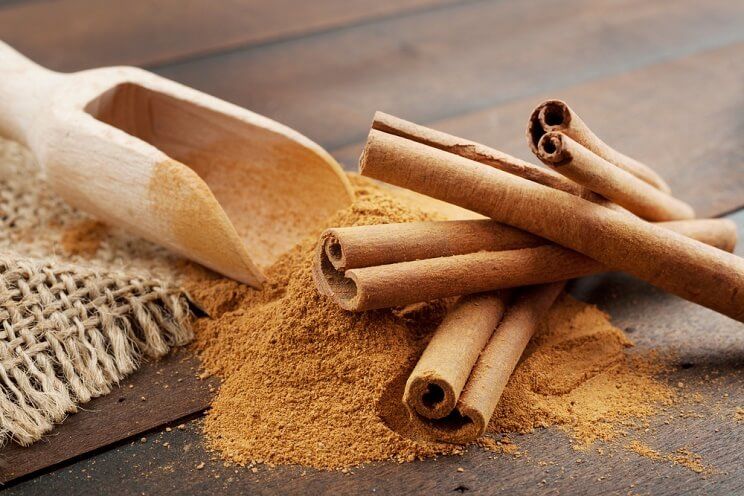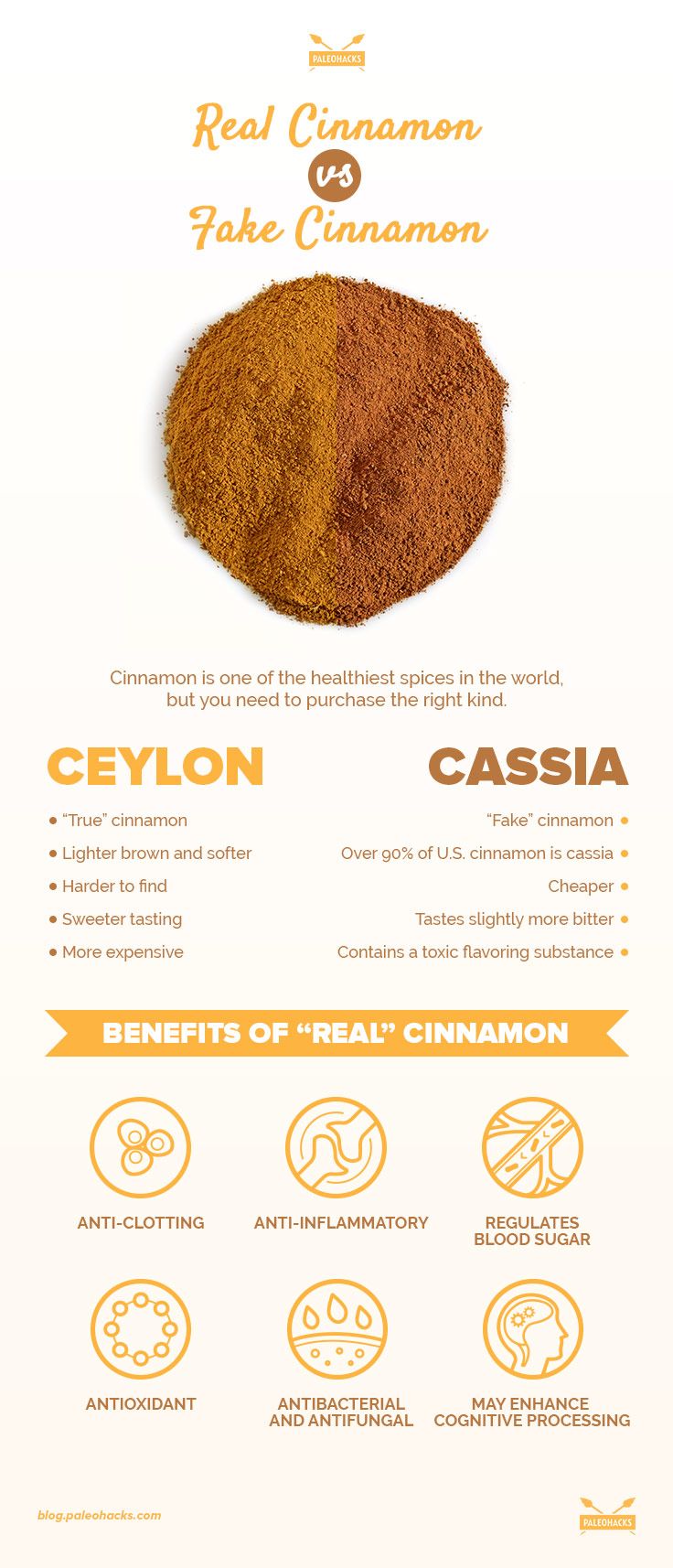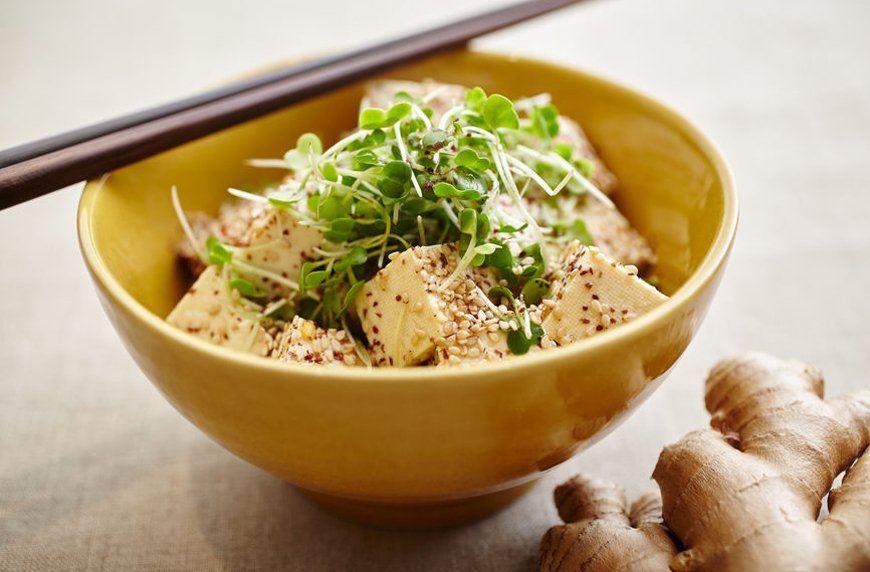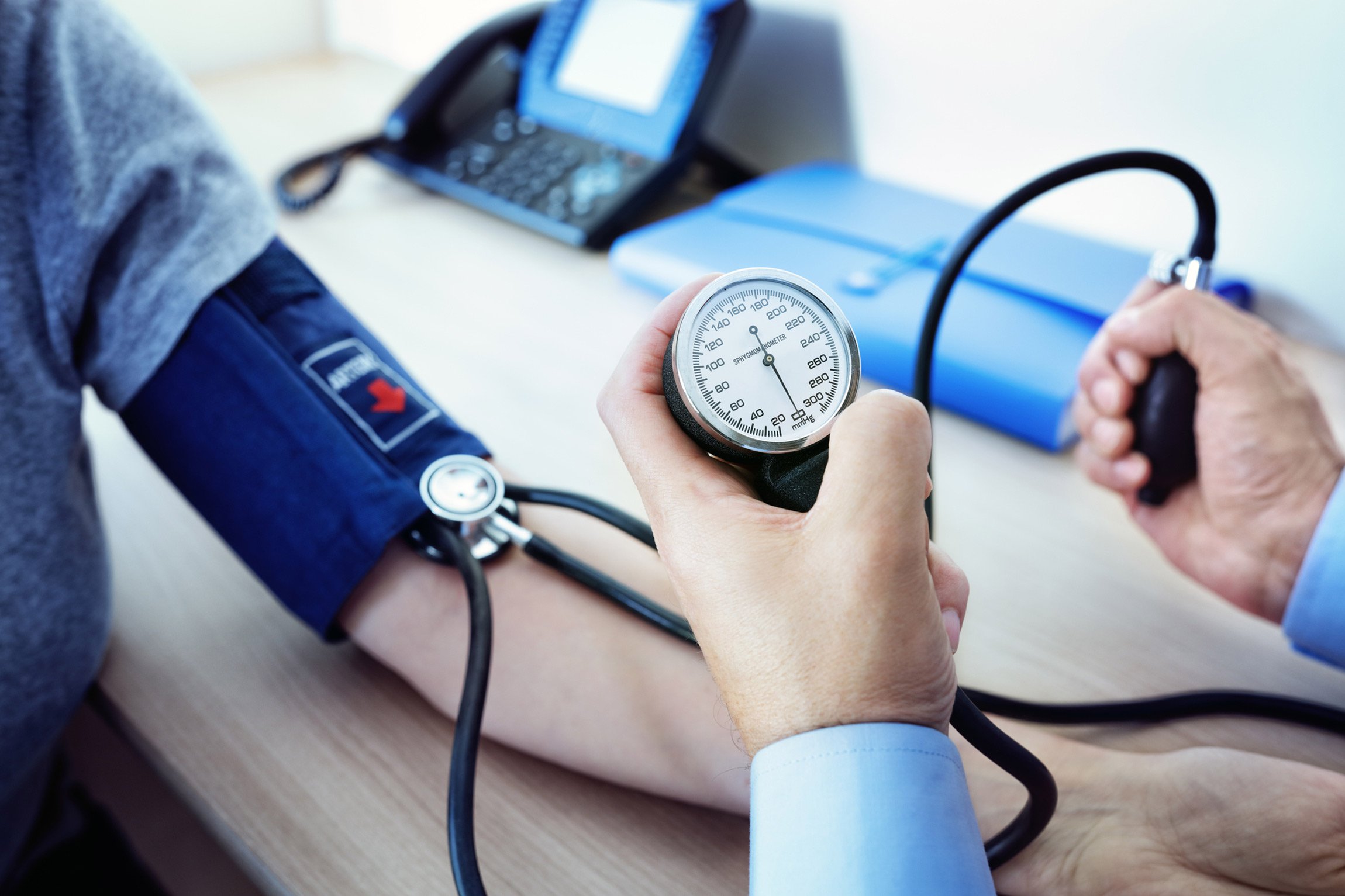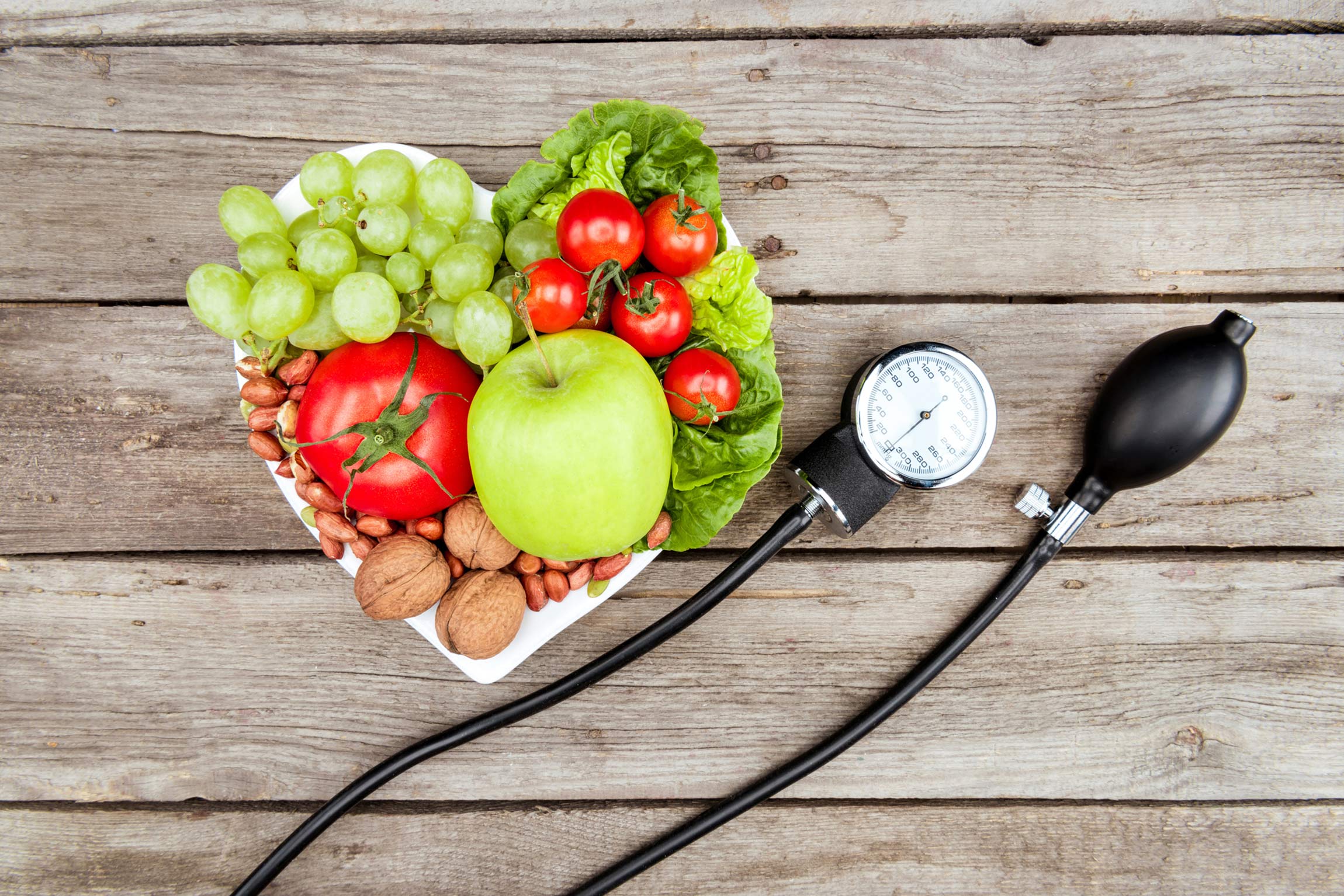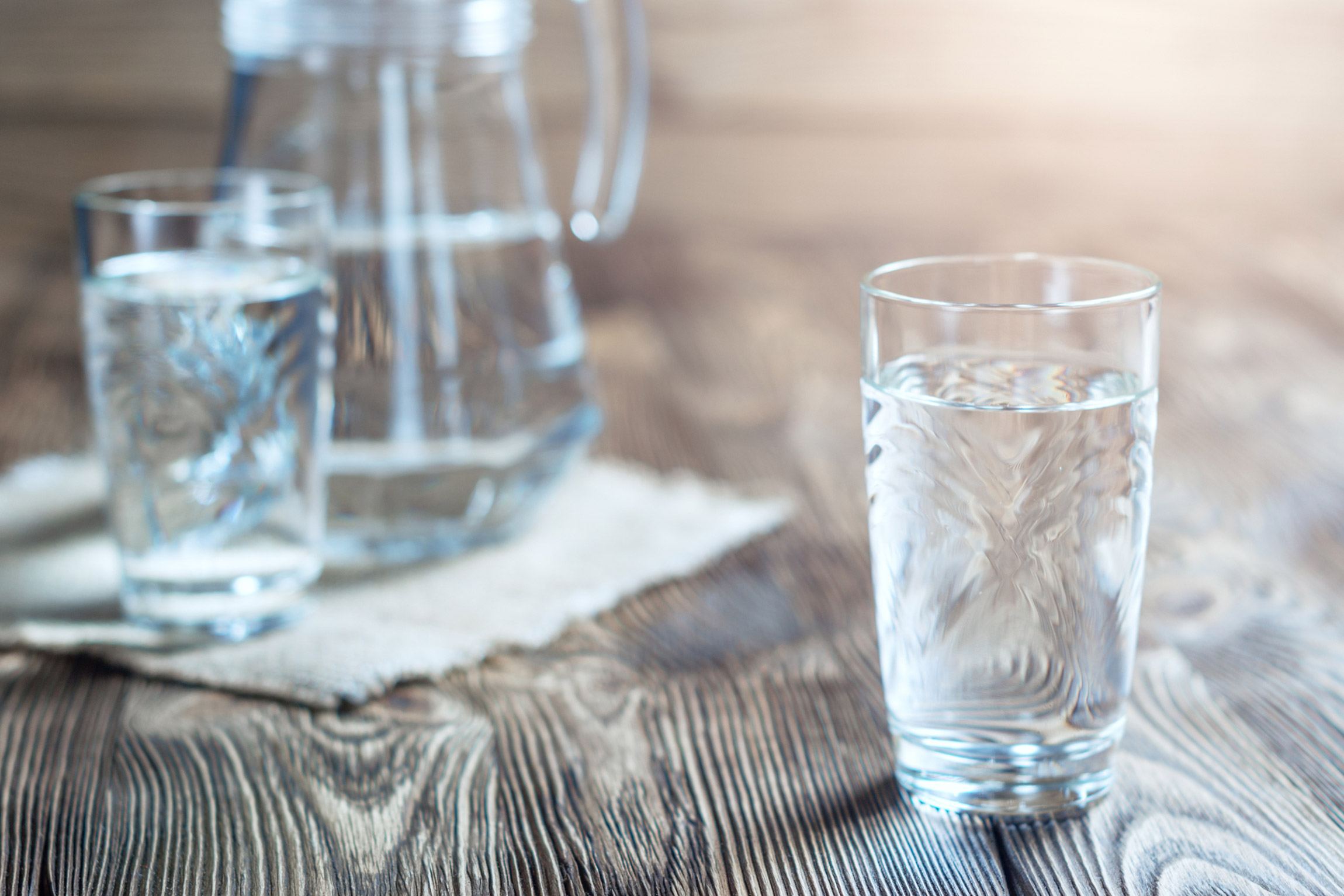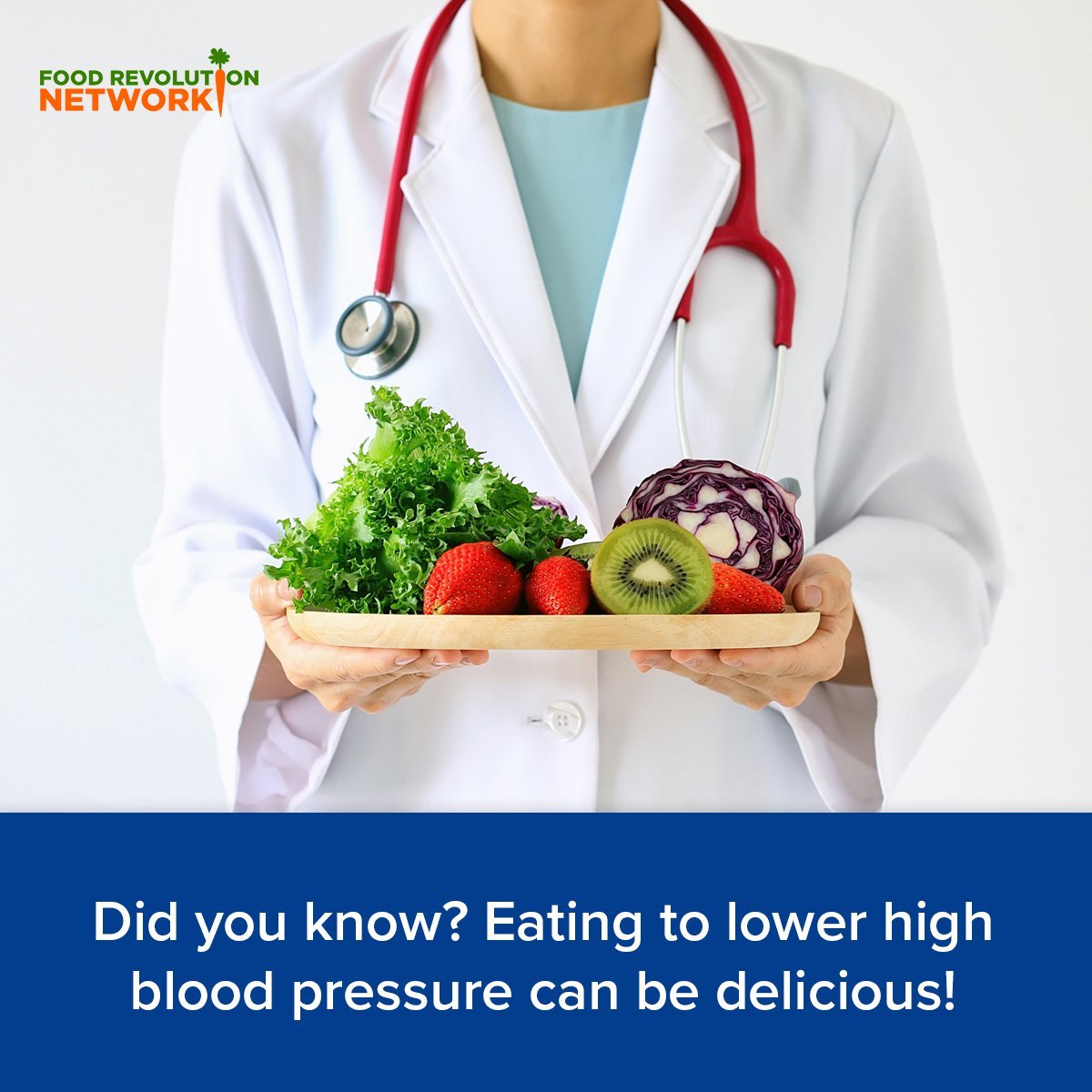High blood pressure, also known as “hypertension,” is the number one
reason people visit their doctor in the United States. Each year, more
than 100 million doctor visits are made for medical management of this
condition.
High blood pressure is both a sign, as well as a causal factor, in heart attacks, strokes, and congestive heart failure, which makes it the leading associated cause of death and disability in westernized societies.
Medical doctors overwhelmingly recommend drug therapy for this
condition, making blood pressure drugs the number one prescription
medication in this country.
But is drug therapy the best approach? And, is it safe?
There are many popular medical myths about high blood pressure. For
example, many physicians believe that high blood pressure is an
“inevitable consequence of aging;” that the “only viable treatment
option for high blood pressure patients is medication”; that high blood
pressure patients must take their medications “for the rest of their
lives”; and, worst of all, that high blood pressure medications are
“safe and effective.”
Why Drugs Are Not the Only Option for Treating High Blood Pressure
This article will show that drug treatment is not the only viable treatment option, and that drug treatment is disturbingly dangerous. In fact, studies strongly suggest that for the majority of patients with high blood pressure, medications may be more dangerous than doing nothing at all.
Fortunately, powerful diet and lifestyle treatment options exist that safely and effectively reduce high blood pressure. But don’t assume that your doctor will tell you about them because many doctors are simply unaware of the facts.
“Powerful diet and lifestyle treatment options exist that safely and effectively reduce high blood pressure.”
Before exploring how to safely treat this condition, let’s look at
what high blood pressure is and seek to understand why it is our
nation’s number one public health concern.
In doing so, it will become clear why medical management is generally
so ineffective and why a safer, more effective approach — one that
takes advantage of the human body’s built-in healing mechanisms — is
often the best choice.
What Is Blood Pressure?
Although high blood pressure does not cause any pain and cannot be
detected without a special device, it is clearly a serious health
problem worthy of your rapt attention.
But what is “blood pressure,” and what can cause it to become “high”?
If you have ever been in a hot tub with the “jets” on, you have
observed a circulating system. When the pump is “on,” the water
circulates from the hot tub, through pipes, into a pump, and then back
to the hot tub. In this way, the water can be put through a filter to
remove impurities and be re-utilized again and again. A hot tub with its
pump “on” is a simple circulatory system. When the pump is “off,” the
water stops circulating and stays wherever it is in the system.
Your circulatory system is very much like the hot tub’s. Your
blood is like the water. Your heart is like the pump, and your blood
vessels are like the pipes. Your heart pumps your blood through the
circulatory system in order to feed oxygen and nutrients to cells
throughout your body, and to remove waste products. By circulating
through the system, your blood is filtered and re-utilized, again and
again.
In a hot tub, as the water comes through the pipes, it has a degree
of force. This force is caused by the action of the pump, which puts
energy into the circulating system and forces the water through the
pipes. When the pump is off, there still may be water in the pipes, but
there is no force. The degree of force in the system when the pump is on
can be gauged in several ways, such as by putting your hand in front of
a “jet.” Another way would be to have a device to measure the amount of
force that the water exerts against the walls of the pipes as it
circulates. Such a device might yield a numerical measurement of the
force, or pressure, of the water within the pipes.
Similarly, your blood exerts a force against the walls of your
blood vessels as it circulates through your body. The degree of this
force is called your “blood pressure,” and it can be measured with a blood pressure monitoring device.
Unlike the water pressure in the hot tub, however, human blood
pressure is highly variable. In the hot tub, the water ejected by the
jets comes in a steady, pressurized stream. But in the human circulatory system, blood pressure varies dramatically from one moment to the next.
Unlike the smooth action of the hot tub pump, the human heart expands
and contracts mightily each second or so, causing your blood pressure
to be comparatively high one moment, and comparatively low in the next.
That is why we need two measurements when checking your blood pressure:
one at the moment when the pressure is highest (your systolic blood
pressure), and one a moment later, when the pressure is lowest (your
diastolic blood pressure).
Your systolic blood pressure is always higher than your diastolic
blood pressure and is always the “top” number when your pressure is
reported.
If your doctor tells you that your blood pressure is “120 over 80,”
this means that your systolic blood pressure was measured at “120,” and
your diastolic was at “80.” Both your systolic and diastolic blood
pressure measurements are important because they indicate how well your
circulatory system is working.
If either of these measurements is unusually high, this warrants your serious attention.
Because, as previously mentioned, elevated blood pressure may be not
only a sign of cardiovascular disease, it is a cause of disease, as
well.
What Does It Mean to Have High Blood Pressure?
There are really no cut-and-dried definitions for high blood pressure.
Researchers have used several different criteria to determine at what
level a person’s blood pressure should be considered “high.” One very
useful criterion is the concept that blood pressure is “high” when it
reaches a level that corresponds to significantly elevated risk for
heart attack, stroke, or congestive heart failure.
One misguided criterion is the idea that blood pressure is “high”
only when it reaches a level that can be effectively assisted by drug
therapy.
Over the years, these and other criteria have been bandied about,
with the final result being a set of definitions that are not based upon
any specific criteria but are still useful for communication purposes.
Your blood pressure is said to be “high” when either your systolic
blood pressure is 140 or above, or your diastolic blood pressure is 90
or above, or both. So if your blood pressure is found to be 142/88
(systolic = 142, diastolic = 88), you are diagnosed as having high blood
pressure, according to current definitions. The same would be true if
your blood pressure was found to be 135/92, or 152/95. In each case,
either the systolic is high, or the diastolic is high, or both. Any of
these findings result in a diagnosis of high blood pressure.
Most people who are diagnosed with high blood pressure have what is
referred to as “mild” high blood pressure. This means that their
systolic blood pressure is between 140-159, and/or their diastolic blood
pressure is between 90-99.
Only when blood pressures are above 160/100 is a patient considered
to have “moderate” blood pressure, and, at even higher levels, “severe.”
These definitions can be quite misleading and are undoubtedly leading to many entirely preventable tragedies.
Deadly Definitions: Why “Normal” Blood Pressures Can Still Be Dangerous
What is considered “normal” is often pathological. For example, if a
person has blood pressure of 136/88, it is considered “normal,” or
perhaps “high normal,” since it is below the arbitrary 140/90 numbers.
But such an individual has five times the risk of stroke of a person
with blood pressure at 110/70!
In fact, one-third of the people who die of heart attacks,
strokes, and congestive heart failure have blood pressures that are
below 140/90.
The current definitions of “normal” or “high normal” blood
pressure may give patients a false sense of security that may very well
cost them their lives. Per current classification, even a person
whose blood pressure has risen to 156/98 is considered to have only
“mild” high blood pressure. Yet, this level is much more dangerous than
even 136/88.
Sadly, most people who die of heart attacks, strokes, and congestive
heart failure have blood pressure described as either “normal” or
“mildly high.”
Problems with Drugs: When Should Blood Pressure Drugs Be Prescribed?
The current convention of diagnosing blood pressure as “high” beginning at 140/90 has created another set of problems.
Most doctors have been taught that once a diagnosis of “high blood
pressure” has been made, blood pressure medication is the treatment of
choice. As a result, many physicians believe that the current
definition of “high” blood pressure is also the same level of blood
pressure at which drug treatments are worthwhile. Unfortunately, this is
not the case.
In multiple studies conducted by world leaders in high blood pressure research, drug treatments have been found to be surprisingly ineffective.
In fact, there is no clear evidence that drug therapy reduces the risk of death in patients with “mild” high blood pressure, which is the majority of diagnosed patients!
In summarizing the results of one of the largest clinical trials ever
conducted, performed by the prestigious British Medical Research
Council, it was reported that for mildly hypertensive patients, “…Active (drug) treatment had no evident effect on the overall cause of mortality….”
In a subsequent review of the entire scientific literature, the
British Medical Journal concluded that there is “no appreciable benefit
to an individual patient from treating (with drugs) a diastolic pressure
of less than 100….”
What these scientists found was that while drug treatments for mild
hypertension may be effective at lowering blood pressure, they were not
effective in reducing overall mortality. Put more bluntly, hypertension
patients in these studies died at about the same rate whether they took
medication or not. These findings reaffirm an important health
principle: Treating the symptoms of disease is not the same thing as causing health.
It also would appear that the dangerous “side effects” of high blood
pressure drugs are sufficiently substantial to obliterate any positive
effects of reducing mild high blood pressure in this artificial manner.
In fact, the side effects of medications are sufficiently toxic that leading medical authorities suggest that medications only become worth the risks when blood pressure becomes “moderately to severely elevated” (160/100 or above).
Typical side effects of high blood pressure medications range from
mildly unpleasant to lethal. These include fatigue, gastric irritation,
nausea, vomiting, diarrhea, dizziness, headache, impotence, depression,
and congestive heart failure.
Don’t assume that your doctor is aware of these facts. If you
are diagnosed with mild, high blood pressure, you likely will be
prescribed medication, instructed that it is helpful, and told that you
must take it for the rest of your life. But before accepting this
potentially dangerous treatment, it may be to your advantage to seek
answers to the following questions: “What caused my high blood
pressure?” and “Can I remove those causes and reverse this condition?”
What Causes High Blood Pressure?
Think back for a moment to the circulatory system in a hot tub. When
the system is working as designed, there is a certain level of water
pressure in the system.
However, we could arrange things that would increase this level of
pressure. One way would be to partially clog the pipes. In this way, the
pressure in the whole system would rise, just as the water pressure in
your garden hose rises when you put your finger over the spout and
impede the flow.
In the human circulatory system, it also is possible to “clog the pipes.” By consuming a diet that is excessive in fats, cholesterol, and animal proteins, it is possible to develop atherosclerosis, a condition of fatty deposits in the cardiovascular system.
Editor’s Note: Considerable
controversy exists about whether fat or cholesterol are, per se,
drivers of atherosclerosis. They are implicated in some studies, while
others indicate that quality of fat, and placement in a wider dietary
pattern, may be more significant to ultimate impact. What seems clear,
however, is that a diet high in animal products, sugar, and processed
foods is often a recipe for high blood pressure and heart disease.
Over time, people can build up such significant deposits that their “pipes” are clogged up, to some degree. This is one of the main causes of high blood pressure and is one reason why high blood pressure tends to become more prevalent as people age.
But this condition is not inevitable. More encouraging still is the finding, by Dr. Dean Ornish and others, that this
condition is reversible with dietary and lifestyle modifications, the
first step of which is to adopt a plant-based diet derived from whole,
natural foods.
While “clogging the pipes” is a major cause of high blood pressure, there are other causes, as well. A second major factor is that excessive dietary salt causes there to be too much fluid in the circulatory system.
Consider once again the analogy of the garden hose. If you turn on
the water “harder,” there is more pressure in the hose. Excessive salt
in the diet can result in excessive fluid volume in the blood, which
results in elevated blood pressure. This cause, too, is reversible, as a
plant-based diet of whole, natural foods, devoid of added salt, is
naturally low in sodium chloride.
We can see that two major causes of high blood pressure:
atherosclerosis and excessive fluid in the circulatory system, are
reversible, given dietary modifications.
Such modifications directly address the causes of high blood pressure
and thus might be expected to be quite effective. The curious reader
might wish to know just how effective such dietary modifications are, as
compared to the drug treatments offered by most doctors.
A summary of results from a variety of studies on diet and lifestyle
modifications, as compared with drug treatment, appears in Figure 1.
Impressive Ways to Lower Blood Pressure Naturally
As you can see in Figure 1, dietary and lifestyle modifications are very impressive as compared with drug treatment.
In a study conducted by Dr. John McDougall and his colleagues, a
program utilizing a moderately low-sodium, vegetarian diet with
moderate exercise resulted in an average blood pressure reduction of
17/13 in just eleven days!
This is particularly striking when we compare these results with
medications, which have been found to reduce blood pressure only about
12/6 points, on average. This should be encouraging for those who have
been told that they must take blood pressure medication for the rest of
their lives.
It is notable that relaxation and meditation, though useful for
many purposes, have not been found to impact high blood pressure.
Many people find this surprising, possibly since high blood pressure
also is known as “hypertension.” Because of this potentially misleading
term, many people have assumed that high levels of stress or “tension”
are a major cause of “hypertension,” or high blood pressure. This is not
the case. High blood pressure is an essentially mechanical, and not
psychological, problem.
The causes are most often some combination of clogged “pipes” and excessive salt in the diet. Lifestyle
changes, such as appropriate diet and exercise, are among the most
effective treatment strategies for high blood pressure. Relaxation,
meditation, and otherwise “taking it easy” are not effective solutions,
as valuable as such strategies may be for your psychological well-being.
As you examine Figure 1, you may observe that the real key to the treatment of high blood pressure is to practice a diversity of health-promoting behaviors.
By avoiding alcohol use, stopping smoking, switching to a
high-fiber, low-sodium, vegan-vegetarian diet, and engaging in moderate,
regular exercise, the problem of high blood pressure usually will
eliminate itself.
However, as alluded to at the beginning of this article, high blood
pressure is not only a sign of distress in your cardiovascular system
but also a cause.
If your blood pressure is elevated above what is normal and healthy
for our species, the pressure itself causes damage to arterial walls of
your circulatory system, which can facilitate the build-up of
atherosclerosis and, thus, exacerbate the high blood pressure condition
itself.
For this reason, it can be useful to reduce high blood pressure as
quickly as possible, rather than to patiently wait for the
often-moderate healing pace of healthful lifestyle changes.
“The real key to the treatment of high blood pressure is to practice a diversity of health-promoting behaviors.”
Is There A Way to Lower Blood Pressure Quickly?
Is there a safe and effective way to rapidly normalize blood pressure?
Indeed there is, and the results of this method represent nothing
less than a breakthrough in the treatment of this condition. The power
of this method is hinted at in Figure 1, the method referred to as
Treatment F.
As you can see from Figure 1, there is one treatment option that significantly outperforms all others, labeled Treatment F.
Treatment F is not a new drug treatment. Neither is it a new, expensive, and patented dietary supplement. It is supervised,
water-only fasting, a technique that allows for the induction of a
potent, natural, adaptive, healing process in a professionally monitored
environment.
This technique is known to surprisingly few health professionals,
though it has proved valuable in the treatment of a wide variety of
health problems. Recently, this powerful technique has been shown to
be an extremely effective method for allowing the body to rapidly
normalize high blood pressure more effectively than any other treatment
reported in the scientific literature.
It may seem incredible to many that supervised water-only fasting can
obtain such impressive results. In fact, most people, including most
doctors, simply will not believe that such a simple procedure can be so
powerful. Few suspect that the body is so capable of healing itself in
this way.
For this reason, Dr. Alan Goldhamer and his colleagues at the Center
for Conservative Therapy set out to carefully document the effectiveness
of supervised water-only fasting and to report the results to the
scientific community in a way that other doctors might find convincing.
To assist him in this task, Dr. Goldhamer and his research staff at the
Center sought the help of one of the world’s leading nutritional
biochemists, Professor T. Colin Campbell of Cornell University.
Fortunately, Dr. Campbell and his statistical expert, Dr. Banoo
Parpia, were enthusiastic about joining the research effort. This
collaboration has resulted in one of the most remarkable studies in the
treatment of hypertension ever conducted.
The Evidence Says: Water Fasting Is An Effective Way to Normalize Blood Pressure Rapidly
In the study, funded in part by a grant from the National Health Association, it was discovered that by
having patients consume nothing but pure water in a supervised
environment of complete rest, blood pressures rapidly normalized.
In fact, many patients who began their fasts while on high blood
pressure drugs were required to quickly discontinue their medications,
so that their blood pressures would not drop artificially low!
Over a 12-year period, 174 patients diagnosed with mild to severe
high blood pressure were seen at the Center for Conservative Therapy and
were placed on a medically-supervised, water-only fasting regime. The
treatment procedure included an average water-only fasting period of
10.6 days, followed by a supervised refeeding period of about one week
with a whole, natural foods diet. The results of the study are
summarized in Figure 2.
In the final analysis, this safe and simple procedure demonstrated extraordinary effectiveness. By the end of their stay, all patients were able to discontinue their medications, no matter how severe their initial condition.
In fact, a review of Figure 2 indicates that the most impressive
results were observed with the most serious cases. In cases of
“moderate” to “severe” hypertension (blood pressures of 174/93 or
greater), the average reduction at the conclusion of treatment was a
remarkable 46/15! For these cases, which medical practitioners generally
would insist need lifetime medical intervention, the average exit blood
pressure was 128/78, using no medication whatsoever!
The reasons for this astonishing success are not yet entirely
understood. Certainly, two of the major causes of high blood pressure
are being addressed: excessive dietary salt is completely eliminated,
and it is likely that some patients experience some reversal of the
atherosclerosis process. However, Dr. Campbell has suggested that
additional mechanisms may be partly responsible for fasting’s remarkable
effects, such as the rapid reduction of a phenomenon known as “insulin
resistance.”
Though the details are incompletely understood, the clinical results are clear and convincing. Water-only
fasting represents an astonishing breakthrough in the treatment of high
blood pressure, with the only “side effects” being that people lose
weight and feel great.
Note: The fasting and high blood pressure study described in this
article was funded in part by a grant from the National Health
Association. It was conducted at the Center for Conservative Therapy in
Penngrove, California. The results appeared in the article, “Medically
Supervised Water-Only Fasting in the Treatment of Hypertension,” published in June 2001 in the Journal of Manipulative and Physiological Therapeutics.
For the Rest of Your Life
Contrary to what many people have been led to believe, high blood pressure is not a condition that requires patients to take drugs for the rest of their lives.
If you suffer from this silent but serious condition, start taking
effective actions today. As described above, there are many things that
you can do to assist your body in regaining a healthy level of blood
pressure.
The first thing to do is to adopt a diet consisting of whole, natural foods,
such as fresh fruits and vegetables, whole grains and legumes, and the
variable addition of nuts and seeds. Remember, the optimal diet excludes
any added salt, since it is a particularly troubling component of the
high blood pressure problem.
In addition, this diet has been shown to aid in the reversal of atherosclerosis, and in weight reduction. Other
important factors that will help to normalize blood pressure include
regular exercise and the elimination of alcohol and tobacco. When followed diligently, such a combined strategy is likely to be very effective.
For those who wish to address their high blood pressure problem
quickly, powerfully, and safely, supervised water-only fasting has been
shown to be a safe and effective tool for the rapid normalization of
blood pressure.
Follow-up data from the Center for Conservative Therapy study has shown that after several months, patients who adhere to a healthful dietary regimen are able to sustain their improvements.
In addition, water-only fasting is a useful method for helping people
to re-educate their palates. This can make it easier for you to fully
enjoy a simpler, more health-promoting diet and the benefits of vibrant,
unmedicated, health for the rest of your life.
Editor’s Note: Resources for Putting This into Action
Fasting can be a powerful healing tool, and it’s been used for
thousands of years. But only recently have research studies started to
uncover the incredible potential of fasting for a variety of medical
challenges, including high blood pressure.
These studies show that fasting may be the fastest way to lower blood
pressure, and that, in the short term, it can dramatically lower even
the highest blood pressure. So hooray for fasting! But no matter how
much improvement someone obtains through fasting, their blood pressure
will predictably return to its previous level if they resume eating the
same foods they had been eating. To keep the gains they’ve gotten
through fasting, it’s imperative that they now adopt — and maintain — a
low-salt, whole foods, plant-strong diet. The short term results from
fasting can be dramatic and maybe even life-saving. But for long term
blood pressure health, eating a healthful diet is of primary importance.
With or without fasting, such a diet is the key to maintaining a
healthy blood pressure level, and achieving all of the extraordinary
health benefits that can bring.
If you want to use water fasting or a medically supervised residential cleanse program, here are two resources you may want to consider:
- Joel Fuhrman, M.D., has created a
21-day Guided Detox program so he can personally guide you through the
intermittent fasting process. Using a special blend of fasting and high
nutrient exposure, his program is designed to enable you to enjoy the
advantages of intermittent fasting – which may include weight loss,
lower blood pressure, and reduced inflammation – without the discomforts
of typical diets and fasts. The program runs November 4-24, 2019,
and if you sign up from this link he will make a contribution to the
work of Food Revolution Network. Find out more here.
- TrueNorth Health Center in Santa Rosa, California, offers highly effective medically supervised water fasting and cleanse programs.
And remember: If you do a water fast, it’s critical to drink high-quality water.
(Many Food Revolution members like the AquaTru water filter because it
delivers high-quality water for a remarkably affordable price. Find out more and get a special discount here. If
you order from this link, the AquaTru manufacturer will contribute a
portion of the proceeds to support Food Revolution Network’s mission of
healthy, ethical, sustainable food for everyone who eats.)
It’s heartening to know that we have natural treatments that can lower high blood pressure naturally.
And unlike most of the blood-pressure-lowering drugs, the side effects
of healthy eating are good ones — like increased energy, expanded mental
clarity, and better sexual function. I’d call that a win!
Tell us in the comments:
-
Does this article change how you think about high blood pressure?
-
What are your experiences with high blood pressure?
-
Do you know or have you used any ways to lower blood pressure naturally?
By Alan Goldhamer, DC, and Doug Lisle, PhD • A version of this article was originally published on NakedFoodMagazine.com

